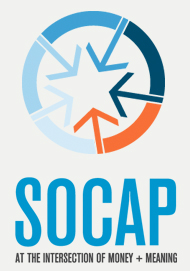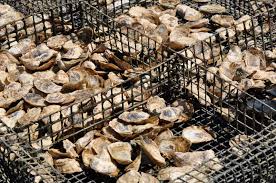
The ‘aha’ moment came during a simple phone call from Alloysius Attah’s aunt. If Ghanaian women like the cassava farmer who raised him were using basic mobile phones, Attah realized Farmerline could help them increase their yields and their incomes.
Since the spring, Attah and Farmerline have used simple voice messages — in Twi, Ga, Fanti, Nzema, Ewe and other languages — to deliver “best aquaculture management practices” infromation and answers questions for smallholder tilapia and catfish farmers in the the Ashanti and Brong Ahafo regions of Ghana.
No need for smartphones or downloaded apps or even SMS text messages — it turns out voice may be the killer mobile app for reaching millions of farmers in thousands of languages, many of whom can’t read.
“People like my aunt are feeding one-third of the world right now,” Attah said on a phone call from Accra before leaving for San Francisco to present Farmerline at SOCAP 13, the social capital markets conference Sept. 3-6. “We need to help them produce more food.”
Because Farmerline’s services raise incomes and deliver value, farmers have indicated a willingness to pay. So far, Farmerline has not charged, but the data and survey responses farmers have been happy to provides has proven a valuable tool for development agencies and NGOs seeking to measure their impact. Contracts with such agencies are Farmerline’s primary revenue source. Revenues also come from advertisements for agricultural products, particularly fertilizer, on Farmerline’s platform.
Farmerline is completing a six-month pilot, backed by the UK’s Indigo Trust, that provided tilapia and catfish farmers tips on best management practices (don’t overfeed the fish!), record-keeping services, access to suppliers and pricing information from buyers. The early data suggests the farmers are producing heavier and higher-quality fish than previously, making their stock more attractive to commercial buyers.
Attah, 24 years old, is an almost perfect exemplar of the convergence of youth, technology and social innovation that is fueling the African renaissance. The youngest of three children, he was raised by his aunt after his parents separated when he was five years old. The only technology was a radio, which broadcast plenty of politics, but little agricultural advice for their small plot of cassavas. Ghana has an average of only one agricultural extension agent for every 2,000 farmers.
At university, Attah studied fisheries management, responding to the country’s push to increase production and reduce fish imports. Ghana’s fish market is indicative of a huge global opportunity for the growth of aquaculture. A US Department of Agriculture report in 2012 found that average fish production in Ghana of almost 300,000 metric tons has not grown since 2009, while the nation’s fish requirement is about 800,000 metric tons, meaning there’s ample demand that even imports can’t meet.
Even before he could graduate, Attah jumped at an opportunity for a three-week training in developing mobile applications provided by the World Wide Web Foundation. He teamed with Emmanuel Owusu Addai, a programmer who also wanted to help farmers. They interviewed fish farmers, who indicated willingness to pay for weekly advice on farm management and market access if it was effective. Reducing fish losses by even one kilogram of fish a month more than covers the farmers’ cost.
But SMS text applications, limited to 160 characters and primarily in English, weren’t appropriate. Customer research with about 300 fish farmers redirected their efforts.
The team recorded messages from extension agents in a range of local languages and developed a platform to deliver the messages. Farmerline’s toll-free service also allows farmers to browse through additional advice without having to be able to read. Similar voice-based surveys allow Farmerline to cost-effectively gather data.
Malcolm Beveridge, of WorldFish, part of the CGIAR research consortium, says “Farmerline is a pretty great idea, especially from an aquaculture perspective. Too few organizations are leveraging information technology to raise fish farmers’ productivity, he says. In addition to supporting farmers with technical advice, better information for farmers can lower transaction costs and increase their negotiating power in dealings with traders. “Of course, it all depends on the quality and timeliness of the information,” Beveridge
It is Attah’s job is to understand the needs of farmers for that high-utility information. His reports are detailed and insightful. In Kodie in Ghana’s Ashanti region, for example, farmer Mohammed Issah told Farmerline that he had thought frequent feeding meant faster growth. “When I started I was dumping the feed to my ponds,” he reported to Farmerline. After a training organized with USAID the emphasized reduced feed waste to cut costs and boost profitability, Issah said he realized he had “thrown all my money into the water in the form of feed.”
Osei Yaw Johnson, a farmer in Agona, said storage facilities are needed so fish can be kept for later sale or processing. Most fish farmers, he said, “cede to any price because they have no place of storage,” according to Attah’s report. “If they ‘prove stubborn,’ their last option would be to share their harvest with family members.”
Women are key to smallholder success. In conjunction with USAID’s Aquafish Innovation lab and several universities, Farmerline will reach out to 80 women, who play key roles co-managing fish farms with the husbands and also far outnumber men in fish processing and marketing. Farmerline will provide recording keeping, mobile-based communication and tools for impact assessment for the project.
The next challenge is to design information systems to improve market access and price visibility. In July, the Farmerline, team now made up of 8 members, kicked off a project, again with USAID, to help fish farmers get better prices for their tilapia and catfish by providing better access and market information.
“Right now we have field agents, listening to the farmers and also talking to big and small buyers about how they procure their fish… before we write a line of code,” Attah says. “For us to create biggest impact, we have to focus on the farmers.”
Editor’s Note: This article is part of an Impact IQ series on Oceans and Sustainable Fisheries, in association with SOCAP 13, the Social Capital Markets conference in San Francisco, Sept. 3-6.



